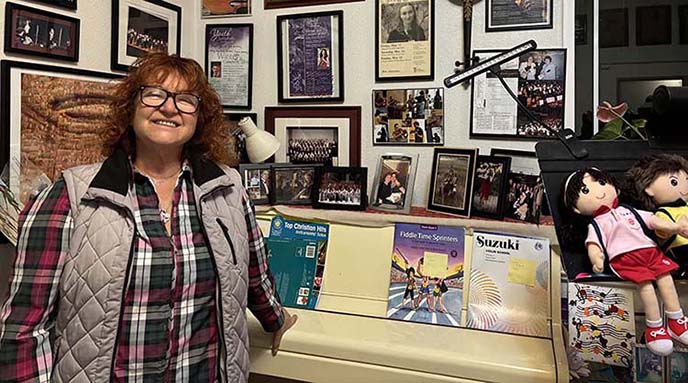Area is where the Treaty of Table Rock was signed, on Sept. 10, 1853, between the U.S. government and local Native nations, establishing a temporary reservation
Nika Barton-Smith, for Underscore News + ICT
A stretch of land in the Rogue Valley with historical significance, including the likely location of a treaty signing and near the site of a massacre, is returning to the Confederated Tribes of Siletz Indians.
The Siletz announced the historic land return in November with the purchase of approximately 2,000 acres of privately owned land adjacent to the Table Rocks preserve, just north of Medford.
“It’s the most historic piece of land that we could possibly get,” said Delores Pigsley, chairman of the Confederated Tribes of Siletz Indians.
The Upper and Lower Table Rocks are central to many Takelma origin stories. Takelma is one of the prominent Native languages of Southern Oregon used by multiple Native nations, according to Robert Kentta, a citizen of the Confederated Tribes of Siletz Indians and the tribal council treasurer.
The area is where the Treaty of Table Rock was signed, on Sept. 10, 1853, between the U.S. government and local Native nations, establishing a temporary reservation on the north side of the Rogue River that included the Upper and Lower Table Rock.
The treaty created the first confederation of Oregon tribes and was the first treaty signed by any Native nation in the West to be ratified by the U.S. Senate. For the region’s tribes, this time period was also marked by hostilities at the hands of the U.S. government and colonial settlers moving into Oregon Territory.
Two years after the signing of the treaty, in October 1855, more than 20 people, mostly women and children, were massacred while camping near Table Rocks. The Rogue River War ensued, in which numerous Native people were killed. After the war ended in 1856, much of the Indigenous population in southwestern Oregon was removed, with many Natives ultimately ending up on the “Coast Reservation,” now called the Siletz Reservation.

Referred to as the Rogue River Tribe of Indians by the U.S. government, the tribal confederation represented people who lived in the valleys of the upper Rogue River, with Table Rocks at the center. The area was primarily home to the Takelma, Latgawa, Shasta, Applegate and Galice people, according to the Siletz News.
“This is a historic moment that reconnects the Siletz Tribe to its ancestors, history and treaties signed near Table Rock,” Pigsley said in a media release. “It is a great honor to return this special land to Indian stewardship.”
Pigsley remembers drives to California with her father as a young girl. He would point out the window as they passed Table Rocks and talk about the significance for their ancestors.
Kentta has similar memories.
“Since I was a kid, summertime or spring break, we might take a trip up the Rogue Valley and go up the Applegate River Valley where my great-grandfather was brought at the end of the Rogue River Wars,” Kentta said. “We have made trips as a family for going on 60 years, reconnecting there, but always as visitors where we had no foothold, no ownership, no place to call home there anymore. Now with this purchase, we have homelands within our homelands.”
The Siletz had long been in consultation with the Bureau of Land Management, The Nature Conservancy and others regarding the stewardship of the land.
Kentta first became aware of the property six or so years ago after having a conversation with staff at The Nature Conservancy. He brought the idea of purchasing the land to the tribal council, setting in motion the historic land deal.
The property was purchased directly from the previous landowner. The Nature Conservancy preserves a conservation easement on the land. The Siletz will continue to work with The Nature Conservancy and the BLM on conservation and restoration.
“To me, land back means, in its purest form, its return of lands to a tribe,” Kentta said. “This is through purchase, and a significant amount paid out for the purchase. So for us, that is regaining of land back, but it’s not a settlement or apology for things that happened in the past.”
The tribe’s goal is to create opportunities for Siletz tribal members to access the historically significant land while safeguarding its character. The tribe plans to work on preservation and restoration, focusing on protecting the natural area rather than developing it.
“There will be big opportunities for restoration and enhancement of the food plants themselves,” Kentta said. “[And] also enhancing tribal members’ access to use of and reconnection with those resources that we’ve been separated from.”
Nika Bartoo-Smith is an Indigenous affairs reporter for Underscore News and ICT. This article previously appeared in the Rogue Valley Times, a partner with States Newsroom.





















